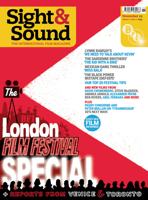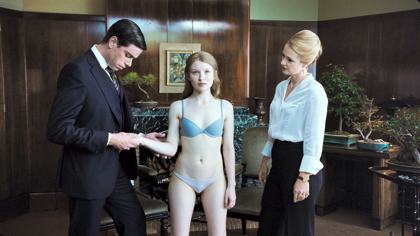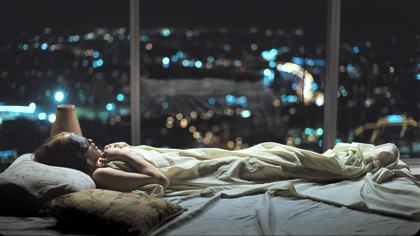Primary navigation


A young woman sells her sleeping body for sex in Australian novelist Julia Leigh’s first film. Sophie Mayer pines for the expressivity of the film’s mentor Jane Campion
First-time filmmaker Julia Leigh, the author of two novels, The Hunter and Disquiet, secured an influential backer for Sleeping Beauty in the person of Jane Campion, who mentored Leigh based on her screenplay. Like Campion’s films, Sleeping Beauty centres on that fairytale figure of femininity: the literally or figuratively unconscious girl, hovering on the brink of self- and sexual awareness. Campion’s protagonists – such as Ada in The Piano (1993) or Ruth in Holy Smoke (1999) – achieve epiphanic awakenings through sexual self-expression. Leigh’s protagonist Lucy – who takes a job as a ‘sleeping beauty’, drugged asleep while male clients spend the night with her – fulfils male characters’ fantasies by voluntarily entering into a physical unconsciousness that mirrors, and intensifies, her numb drift through university and part-time employment.
Leigh’s novels are celebrated for their spare and intimate exploration of characters who appear as blank as Lucy but are internally roiling with obsession and loss. Sleeping Beauty aspires to create a similarly haunted disconnect between Lucy’s presentation and her subjectivity. Yet Leigh isn’t able to muster a cinematic equivalent of a first-person narration that would convey Lucy’s interiority to the viewer, not least because Lucy is isolated, inarticulate, arch and frequently asleep. Despite scenes where we watch Lucy while she’s alone, or hear only her side of phone conversations, we as viewers have no privileged insight into her motivations or reactions.
Lucy’s muteness – she barely speaks when spoken to, using formulaic repetitions even with her only friend Birdmann – isn’t the tactical weapon employed by Campion’s Ada, or the observant wonder of Morvern Callar in Lynne Ramsay’s 2002 film; it is a first-timer’s technical flaw, along with the arch yet leaden dialogue (“Your vagina is a temple,” Lucy’s employer Clara tells her), the longue durée with its insistently flat pictorial framing, and the stilted nature of the performances. The flawed direction is most apparent during the film’s only attempt at dramatic tension, when Lucy is first rendered unconscious and Clara brings a client into the room where she sleeps. It’s the first extended moment in the film in which Lucy is not – cannot be – the point-of-view character, and the surrender of her connection to the audience should create a frisson. Instead, the client delivers to camera a summary of a portentous Cortázar story.

This literary reference, which implies that the film aspires to an allegorical interpretation, is as empty as other hovering allusions to the tradition of the European fairytale and to the Japanese classic The House of the Sleeping Beauties by Kawabata Yasunari, from which the conceit of men paying to be with unconscious women is borrowed. Whereas Catherine Breillat’s 2010 Sleeping Beauty engaged wittily and critically with the operations of gender, class and race, Leigh’s film simply reproduces them, from the Orientalism of the premise through to the aspirational class narrative of the fairytale princess. Lucy embodies Catherine Hakim’s problematic and much derided theory of ‘erotic capital’ – she’s a postmodern woman who trades on her looks in order to receive money via the passive power of being desired.
While Lucy’s variety of jobs – as an office temp, a waitress and a participant in scientific experiments – suggest that all labour is a form of prostitution, the film’s idealised and desexualised portrayal of well-remunerated sex work is itself a fairytale, not least because Lucy gains the position through her resemblance to the archetypal blonde, white-skinned fairytale princess. When answering Clara’s job ad, she describes herself over the phone as “slim… pert” – and, without a cinematic solution that allows the viewer access to her subjectivity, her physical attributes remain the defining qualities of her character. The film’s concluding shot, a recursion to grainy surveillance video footage of Lucy asleep (a tactic overly familiar from Michael Haneke’s Hidden), supposedly confronts viewers with evidence of our own voyeurism and/or complicity in the traffic in women, but only serves to underline the film’s.
Flatliners: affectless sex: Nick James sees Sleeping Beauty at Cannes (May 2011)
Sadean woman: Catherine Breillat talks to Geoffrey Macnab about Anatomy of Hell (December 2004)
Sex and self-danger: Graham Fuller on Jane Campion’s In the Cut (November 2003)
Soul survivor: Kate Pullinger on Campion’s Holy Smoke (October 1999)
Sisters, sex and sitcom: Ginette Vincendeau on Breillat’s À ma soeur! (December 2001)
The limits of sex: Richard Falcon on Patrice Chéreau’s Intimacy (July 2001)
Sex the Annabel Chong Story reviewed by Linda Ruth Williams (May 2000)
The edge of the razor: Leslie Felperin on Breillat’s Romance (October 1999)